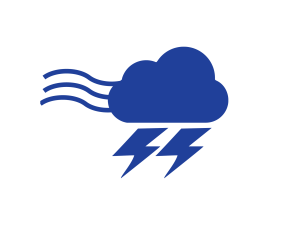Get Ready for Emergencies – This is a guide for individuals and households to prepare for emergencies. This replaces the SES Home emergency plan.
- It’s about you!
- Know your risk
- Your emergency plan
- Communicate and connect

1. It’s about you!
To help prepare for an emergency, think about your life now.
- Everyday life and what you do on a typical day
- Your home
- Is it isolated?
- Can you quickly get out of your home if you need to?
- Do you rely on tank water or an electric pump?
- Do you have working smoke alarms?
- Transport – how do you usually leave home?
- Your health – what do you need to manage your health everyday, such as medicine, other people or equipment?
- Do you need support? – Do you live with a disability or find it hard to
- Do everyday activities or
- Read or understand information?
You may need help or have extra things to think about to get ready for emergencies. Find out about support for people with disability to get ready for emergencies.
- Your network – the people you know and trust and how you communicate with others
See the Get ready for emergencies guide to develop a plan that fits your life.

2. Know your risk
Find out about hazards that can impact your home.

Understand emergency services and what they do
- State Emergency Service
- Tasmania Fire Service
- Ambulance Tasmania and the Department of Health
- Tasmania Police
- Local government
- Other parts of the Tasmanian Government
- Community organisations
- TasNetworks, TasWater and telecommunications providers

Getting ready for emergencies is everybody’s business.
SES and other emergency services play key roles in floods, storms and other emergencies, but everyone must make plans for emergencies that fit their lives.
There is extra support for Tasmanians with disability to prepare for emergencies.
You must
- learn about your hazard risk like floods, storms and bushfire.
- Know what to do
- Well before an emergency happens
- Immediately before and during and emergency
- After an emergency.
- Your plan must include the people
- You support
- Who support you
- Stay alert for any hazards such as
- Severe storm
- Flood
- Bushfire

3. Your emergency plan
Download the Get ready for emergencies guide to make a plan that fits your life.
Your emergency plan covers:
- Key emergency contacts and people you may need to contact in an emergency
- Preparing an emergency kit for
- if you stay at home in an emergency, or
- need to leave home in an emergency.
- What happens if there is
- no power,
- no water,
- no phone connection
- Internet or
- Road access is cut
- If you need to leave home in an emergency.
- Health and insurance issues in an emergency
- Looking after animals in an emergency (link to RSPCA information)
- How to reduce the impacts of emergencies
Download the Get ready for emergencies guide.

Where to find warnings and other key information
- TasALERT.com – for key information and warnings during emergencies
- Download the TasALERT app to get warnings straight to your phone
- ABC Local Radio – find your local frequency
- National Relay Service Phone 133 677
- Bureau of Meteorology Warnings Phone 1300 659 217
Find out more about emergency warnings in Tasmania.
4. Communicate and connect
Talk to your family and other support networks about your emergency plan and their plans for emergencies. How might you help each other during emergencies such as storms and floods? Are there any gaps in your emergency plan that others might help to address?

More information
- Get Ready for Emergencies – This is a guide for individuals and households to prepare for emergencies.
- Be ready for storms and floods – visual guide
- Support for people living with disability to prepare for emergencies
- Primary Industry Flood Readiness Toolkit
- Business Tasmania resources on risk management, emergency preparedness and recovery

